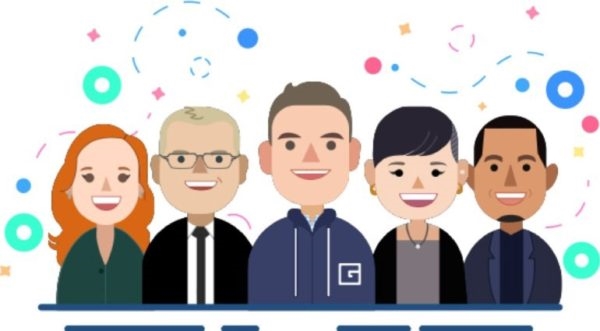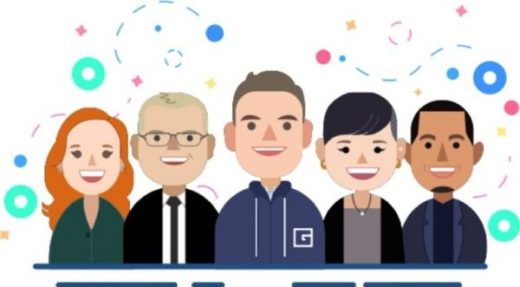How Can We Ensure Diversity In The Workplace?
— April 13, 2019

The diversity of opinion, outlook, and background in the workplace is hugely beneficial for teams and organizations. And yet, despite their best efforts, hiring managers are unconsciously inclined to hire people similar to themselves. Whilst this is a natural human tendency, it causes problems when the aim is to diversify a group of people and can hamper a team’s effectiveness.
Gender Diversity
Take, for example, gender. For optimal performance, research suggests that the ideal composition for a team is completely balanced in terms of gender, although this is often not the reality of every team. Diverse teams simply perform better. A study from Gallup found that gender diverse businesses had better financial outcomes than businesses led by a single gender.
As managers, women’s natural social sensitivity and more transformational leadership style increase the feeling of ‘psychological safety’ in a team, allowing people to feel understood and supported, in contrast to the more male ‘command and control’ style of management. In our own research, Good&Co found that female managers tend to be more creative and open-minded, meaning they are more likely to consider all possible approaches to problems, including interpersonal and emotional factors that might be easily overlooked, due to their higher levels of empathy. We also found that female managers tended to be more methodical and dutiful than male managers, suggesting they may be slightly more level-headed at work.
Cognitive Diversity
It’s not just about the diversity that we can see, though — less obvious elements such as sexual orientation, religion, and neurodiversity should all be considered. And what about diversity of thought? Sometimes referred to as cognitive diversity or personality diversity, this reflects the fact that all people have different processing styles, perspectives, and preferences.
Being cognitively diverse enables a team to complete tasks and solve problems quicker, and means they are less likely to experience ‘groupthink’. If members of a team all have similar personalities and thinking styles to each other, efficiency suffers. For example, think of a team in which everyone is highly attentive to detail, but no one is very results-focused. They are likely to lose sight of the big picture and main aims of a project due to becoming too caught up in the finer details. A 2017 study demonstrated the positive effect of cognitive diversity on teams’ problem-solving abilities, finding that when a team contained members with different processing styles and perspectives, they were able to complete complex training exercises quicker than less cognitively diverse teams.
The greater the diversity of thought within a team, the greater the potential for innovation, as a wider range of approaches are likely to be suggested and considered. Whilst larger teams are naturally more likely to have a greater variety of perspectives in them, the solution isn’t quite as simple as hiring more people to increase the size of the team; problems can arise when a team becomes too large. Good&Co’s research into team effectiveness found that teams of five people tend to be the most effective in terms of overall performance, reporting the least problems. In particular, teams of more than ten people reported increased problems with communication and respect amongst team members.
So how can psychometric tools help out? People sometimes worry about measuring candidates’ and team members’ personalities in order to hire for ‘culture fit’, because it sounds, on the surface, like it may lead to the hiring of only candidates who are similar to the existing team. However, this is not the case; culture fit is not about everyone being the same. In fact, the use of psychometric tools is likely to increase diversity because it removes the influence of unconscious human biases.
80% of companies utilize psychometric tools in their workplace to measure personality of team members. Employees tend to work better when an organization accommodates to their individuality, which is why personality is becoming more well known in the world of business today.
What can be done to increase team diversity?
Platforms such as Good&Co Pro can help to overcome bias by looking objectively at team culture and candidate personality. Whilst there are often concerns that psychometric tests might also be inherently biased against certain groups, Good&Co have found this not to be the case with our quizzes. As part of our ongoing validation efforts, Good&Co carried out an adverse impact study, investigating age, gender, ethnicity, and sexual orientation, and revealed no bias in any of these areas.
As well as implementing psychometrics to minimize bias, there are of course other steps that can be taken to increase diversity. Some of these include:
- Providing Training — Arranging unconscious bias training for managers — even awareness of our human biases can reduce them.
- Encouraging Employee Referrals — If your organization accepts employee referrals, encourage referrals from diverse employees — take advantage of the fact that people are most likely to recommend others who share their background.
- Measuring Diversity — By measuring a company’s diversity, it can help improve the levels of diversity because it will bring to light the steps and actions needed to improve.
- Focusing on Retention — In order to avoid the high turnover rates of employees and a similar organizational culture, focus on retaining your employees.
- Making it Part of Your Mission — Aim for involvement between employees of all levels and through all departments of the company.
- Staying Active — Take an active role and make diversity an important part of your company. Be proactive instead of reactive by reaching out to diverse candidates instead of waiting for them to apply with your company.
When it comes down to it, for diversity to really help an organization, the effort shouldn’t stop after hiring. For those new hires to want to stick around, team members need to acknowledge, understand, and appreciate each other’s differences and thinking styles, embracing them. Implementing diversity training for all employees is one way to ensure that they understand the importance of increasing diversity and creating a more inclusive culture. If a team’s culture does not change and adapt, new employees from minority groups will not feel accepted and the organization will have trouble retaining its diverse workforce.
Diverse organizations serve many advantages in the workplace. A diverse workforce leads to increased creativity, problem-solving, recruitment and retention, and an increase in overall productivity.
This article was originally published here.
Business & Finance Articles on Business 2 Community
(48)


